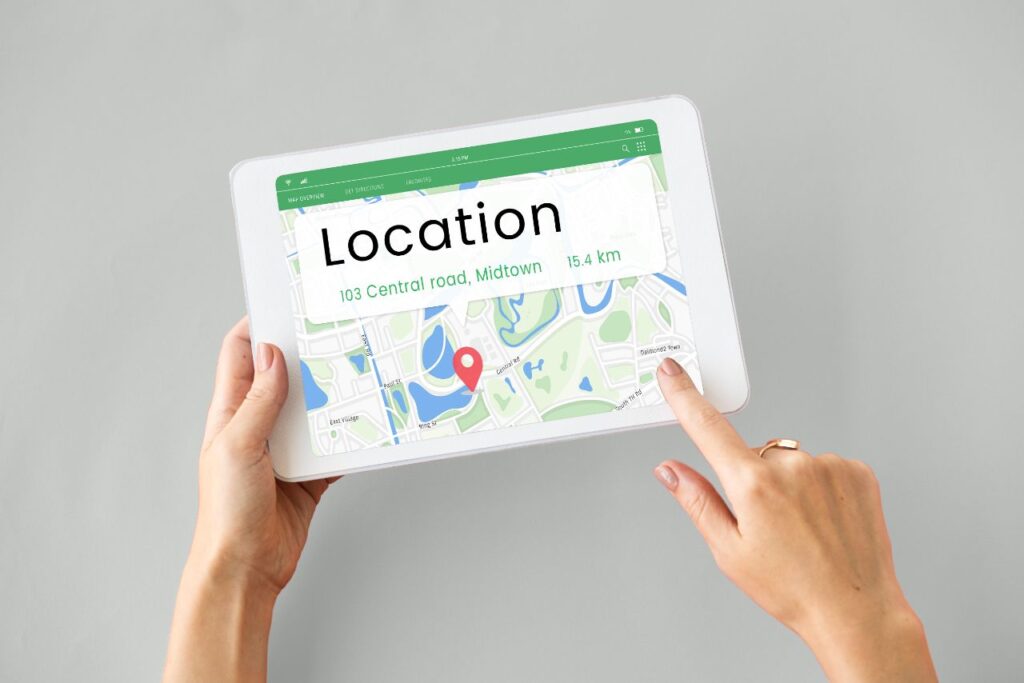Optimizing online presence for local search improves businesses’ connections with nearby customers. This method is crucial for businesses that depend on walk-in customers and customers based on location, like restaurants, gyms, and local services. By focusing on specific local search engine optimization strategies, companies can connect with individuals actively looking for nearby services, proving to be a successful method for increasing presence in local markets.
Hyperlocal SEO expands on this idea by honing in on even tinier, more precise geographical locations. In contrast to general local marketing, hyperlocal SEO targets specific audiences within a small geographic area, such as individual neighborhoods or city blocks. Hyperlocal marketing guarantees businesses are extremely relevant to people in close proximity by customizing content and search terms for specific micro-regions. For example, a nearby café could focus on phrases like “coffee close to Downtown Seattle” to attract customers in that specific area instead of targeting the entire city.
Geo-targeting techniques are pivotal in hyperlocal marketing, enabling businesses to deliver personalized content and ads to users based on their exact location. This approach appeals to “micro-moments” — those spontaneous, location-based searches for nearby products or services. Using hyperlocal SEO and geo-targeted keywords boosts a business’s chance to engage people exactly when they need it, turning local search visibility into increased foot traffic and customer loyalty, particularly among American consumers who frequently rely on location-based searches to make quick purchasing decisions.
The Rise of “Near Me” Searches and How to Optimize for Them
The demand for “near me” searches has surged as consumers increasingly look for nearby solutions on their smartphones. These searches, often occurring in micro-moments, reflect consumers’ immediate needs, like finding “restaurants near me” or “grocery store nearby.” According to recent trends, searches containing “near me” have grown dramatically, driven largely by mobile users and voice-assisted queries. This presents a prime opportunity for local businesses to capture high-intent customers by ensuring they appear at the top of these searches.
To optimize for “near me” searches effectively, start by creating a strong foundation in local marketing. This includes optimizing your GMB profile with accurate business information, such as your address, phone number, and operating hours, which significantly enhances visibility in geo-targeted searches. Positive customer reviews on GMB and other platforms also boost your local search prominence, as they signal credibility to both search engines and potential customers.
Incorporating hyperlocal SEO tactics can enhance relevance in such searches. This includes integrating certain local keywords into your website content, such as using phrases like “top pizza in Downtown Austin” instead of more general keywords. Furthermore, ensure that your website is optimized for mobile use, as a smooth user experience on smartphones and tablets can lead to increased conversion rates and improved interaction with customers who are always on the move.

Leveraging Google My Business for Hyperlocal Visibility
A well-optimized GMBlisting is essential for hyperlocal SEO, as it enables businesses to reach nearby customers precisely when they’re looking for relevant services. For local businesses, maintaining an accurate and engaging GMB profile not only boosts visibility but also helps capture micro-moments—those instances where people search for immediate needs, like “coffee shop near me.”
To maximize GMB’s potential, follow key practices to optimize your listing. First, ensure all business information, including your name, address, and phone number, is accurate and consistent across all platforms. Inconsistencies can lead to lower rankings in local search results. Adding relevant keywords in your business description and using precise categories also increases visibility for geo-targeted searches.
Great images of your products, location, and services can have a big effect, as they enhance engagement and make customers more at home with your business. For enhanced local marketing, consistently share updates and promotions on your GMB profile to maintain an active and relevant profile. Google Posts is a handy tool for sharing timely details like special events or limited-time deals, drawing in local customers right away.
Encourage customer reviews and respond promptly to feedback. Positive reviews not only enhance credibility but are a significant factor in Google’s ranking for local searches, helping your business appear prominently in local search results. Consistent updates and active engagement make GMB a powerful tool for connecting with nearby customers and boosting your hyperlocal presence.
Creating Location-Specific Content to Engage Local Audiences
Creating content that resonates with local audiences is essential for any hyperlocal SEO strategy. By tailoring blogs, articles, and multimedia to cover local interests and events, businesses can connect with nearby customers and increase local engagement. Such content establishes a brand’s presence in the community, making it relevant to customers actively searching for local solutions.
A successful strategy involves creating blog articles centered on topics related to specific neighborhoods. For instance, a coffee shop might share content about top relaxation spots in the area or report on local events. Shining a spotlight on events within the community, like local fairs or charity runs, is an effective way to produce relevant and valuable content. This boosts engagement and also indicates to search engines that the business is a vital component of the local community, potentially enhancing rankings in geo-targeted searches.
Businesses can also showcase local partnerships or customer stories to add a personal touch. For instance, sharing testimonials from local patrons or collaborating on posts with other nearby businesses humanizes the brand and builds trust with the community. Additionally, creating guides about local landmarks or attractions, like “Top 5 Attractions in [Neighborhood],” appeals to both residents and visitors researching the area.
Finally, leveraging user-generated content can add authenticity to local content. Encourage customers to share their experiences and photos, which can then be featured on your site or social media. This strategy fosters community interaction, enhances local marketing efforts, and makes customers feel valued and connected to the brand’s local identity.
Building a Hyperlocal Backlink Strategy
Backlinks from local websites and directories play a crucial role in hyperlocal SEO by boosting a business’s authority and search visibility within its specific area. These local backlinks help search engines recognize a business as a trusted resource within the community, leading to higher rankings in local search results. Targeting backlinks from neighborhood-focused sites, community boards, or local directories strengthens geo-targeting efforts, making a business more visible to nearby customers searching for relevant services.
To build quality hyperlocal backlinks, businesses can start by collaborating with other local entities. Partnering with neighborhood businesses for co-hosted events or sponsoring local festivals and charity events is an effective way to earn backlinks from event websites and promotional pages. Sponsorships, in particular, can include links on event websites, social media shoutouts, and even local news mentions, all of which reinforce brand visibility within the local market.
Collaborating with local journalists and key opinion leaders is also a powerful strategy. Local reporters or bloggers covering events and business news in their area are usually willing to collaborate, especially if the content matches community interests. Businesses have the chance to provide exclusive insights, interviews, or press releases to these media sources, which can lead to backlinks from trusted local sources. Moreover, involving local influencers to evaluate or showcase products or services on social media and blogs creates genuine local backlinks and boosts visibility in the community.
Through these strategies, businesses can effectively leverage local connections to build a robust hyperlocal backlink profile, increasing their relevance and reach among their target audience in the community. This approach not only drives direct traffic but also establishes the business as a local authority in its niche.

The Role of Online Reviews in Hyperlocal Marketing
Online reviews are a powerful asset in hyperlocal SEO and play a crucial role in shaping a local business’s reputation and search visibility. Reviews contribute significantly to geo-targeting efforts, as they serve as social proof, building credibility and trust among local consumers. In fact, around 88% of consumers are more likely to choose a business that responds to both positive and negative feedback, which reinforces the brand’s commitment to customer satisfaction. Positive reviews also act like personal recommendations, increasing the likelihood of new customers trying out a business.
Businesses can promote positive reviews by ensuring a seamless post-purchase process and seeking feedback through follow-up emails or signage. It is important to give careful responses to both positive and negative reviews, thanking for the compliments and addressing any issues raised. By doing this, businesses enhance both customer loyalty and search rankings visibility, as local SEO is influenced by the volume and recency of reviews.
Integrating these reviews on platforms like Google My Business further supports local marketing by reinforcing credibility in “micro-moments” when potential customers are making quick decisions. Responding actively to reviews also signals to search engines that the business is engaged and trustworthy, which can positively impact its ranking in local search results. In hyperlocal marketing, reviews are invaluable for building community relationships and driving consistent customer engagement, ultimately positioning the business as a trusted, local choice.
Tracking and Analyzing Hyperlocal SEO Performance
To effectively measure hyperlocal SEO performance, utilizing a combination of tools and specific metrics is essential. Google Analytics, Google My Business (GMB) Insights, and additional SEO platforms like SEMrush provide valuable insights into local marketing impact and allow businesses to refine strategies to better engage their target audience.
Google Analytics is a foundational tool, especially for tracking local search traffic and engagement. By analyzing metrics like organic traffic from local searches, bounce rate, and session duration, businesses can see how effectively their website engages local visitors. Monitoring top-performing landing pages can also reveal which content resonates best with local users, helping refine geo-targeting efforts. Conversion tracking in Google Analytics is another key metric, showing how often users take desired actions, such as filling out forms or making purchases, which can directly impact business outcomes in micro-moments.
GMB Insights provides a greater emphasis on local views by displaying user engagement with a Google business listing. Statistics like the number of clicks for directions, phone calls, and website visits on GMB give a snapshot of how visible a business is in the local area. If a restaurant receives many inquiries for directions, it could signal significant local attention and prompt additional improvements for nearby searches.
Additional tools like SEMrush’s Local Map Tracker can track keyword positions on Google Maps, allowing businesses to refine their hyperlocal SEO strategy based on ranking changes. By regularly monitoring these metrics and making adjustments, businesses can effectively strengthen their hyperlocal presence and engage with their immediate audience in a meaningful way.
Conclusion
Adjusting to hyperlocal SEO trends enables companies to connect with a very specific and devoted local clientele. Businesses can distinguish themselves, gain trust, and establish a lasting competitive advantage within their communities by implementing strategies such as maximizing Google My Business, utilizing local content, and monitoring results.












